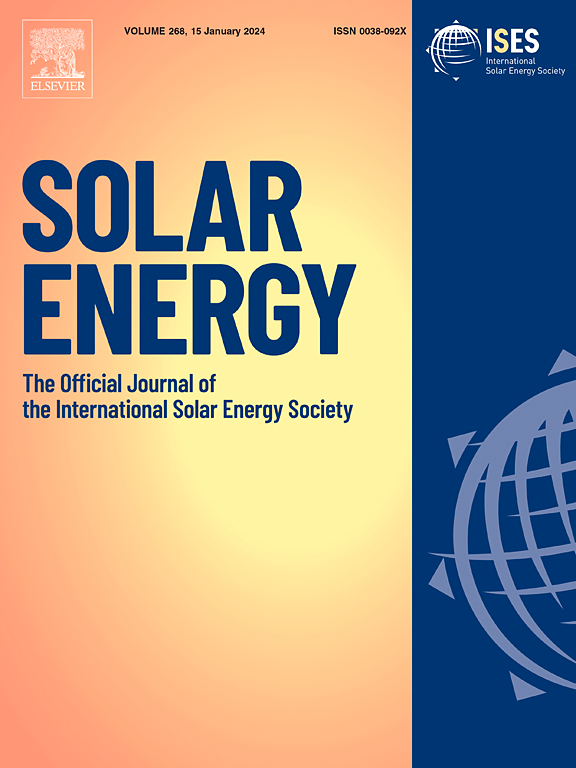Study on energy and exergy performance of a new hybrid perforated photovoltaic/solar air heater integrated with encapsulated phase change materials: An experimental study
IF 6
2区 工程技术
Q2 ENERGY & FUELS
引用次数: 0
Abstract
The current study conducts energy and exergy analyses on an innovative hybrid perforated photovoltaic/solar air heater (PV/SAH) using passive and active methods to improve thermal and electrical efficiencies. Since increasing PVs’ temperature reduces their electrical efficiency, various techniques have been employed to handle this problem, employing effective cooling strategies. This study uses an experimental approach to analyze two cooling strategies: encapsulated phase change material (PCM) units as a passive method and forced-convection mechanism as an active method. Two scenarios were considered: hybrid PV/SAH with and without encapsulated PCM units at two mass flow rates of 0.05 kg/s and 0.07 kg/s. The results illustrate that the encapsulated PCM reduced the PV and outlet temperatures by 2 °C and 4 °C, and 3 °C and 1.5 °C at the mass flow rates of 0.05 kg/s and 0.07 kg/s, respectively. The lower the outlet temperature, the lower the thermal efficiency. Hence, using the PCM units decreased the thermal efficiency but improved the electrical efficiency. The PCM units caused a reduction in daily overall energy efficiency by 12.41 % and 8.36 % at the mass flow rates of 0.05 kg/s and 0.07 kg/s due to reducing thermal efficiency. Unlike the energy efficiency, the PCM units improved the daily overall exergy efficiency by 6.28 % and 8.71 % at the mass flow rates considered. Hence, using passive and active methods is a robust technique to improve the hybrid systems’ performance.
研究一种集成了封装相变材料的新型混合穿孔光伏/太阳能空气加热器的能量和能效性能:实验研究
本研究采用被动和主动方法,对创新型混合穿孔光伏/太阳能空气加热器(PV/SAH)进行了能量和放能分析,以提高热效率和电效率。由于光伏的温度升高会降低其电气效率,因此人们采用了各种技术来解决这一问题,并采用了有效的冷却策略。本研究采用实验方法分析了两种冷却策略:作为被动方法的封装相变材料 (PCM) 单元和作为主动方法的强制对流机制。研究考虑了两种情况:在 0.05 千克/秒和 0.07 千克/秒两种质量流量条件下,使用和不使用封装相变材料单元的混合光伏/太阳能。结果表明,在 0.05 千克/秒和 0.07 千克/秒的质量流量下,封装 PCM 分别将光伏和出口温度降低了 2 ℃ 和 4 ℃,以及 3 ℃ 和 1.5 ℃。出口温度越低,热效率越低。因此,使用 PCM 设备降低了热效率,但提高了电效率。在质量流量为 0.05 千克/秒和 0.07 千克/秒时,由于热效率降低,PCM 单元导致日总能效分别降低了 12.41% 和 8.36%。与能效不同的是,在考虑的质量流量条件下,PCM 设备的日总体放能效分别提高了 6.28 % 和 8.71 %。因此,使用被动和主动方法是提高混合动力系统性能的可靠技术。
本文章由计算机程序翻译,如有差异,请以英文原文为准。
求助全文
约1分钟内获得全文
求助全文
来源期刊

Solar Energy
工程技术-能源与燃料
CiteScore
13.90
自引率
9.00%
发文量
0
审稿时长
47 days
期刊介绍:
Solar Energy welcomes manuscripts presenting information not previously published in journals on any aspect of solar energy research, development, application, measurement or policy. The term "solar energy" in this context includes the indirect uses such as wind energy and biomass
 求助内容:
求助内容: 应助结果提醒方式:
应助结果提醒方式:


